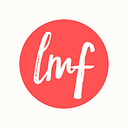Introduction to Diversity and Inclusion
Despite diversity and inclusion being such a hot topic, less than 50% understood how diversity impacts their everyday life (LMF, 2021).
For this reason, LMF network created a 4 workshop series to educate community members, especially if corporations weren’t able to access the budgets to do so.
Diversity reports and recommendations
LMF network carried out a diversity and inclusion study and as a result, launched 4 research reports with recommendations.
The aim of the diversity and inclusion programme is to increase knowledge of diversity, inclusion, intersectionality and neurodiversity. The programme aims to increase diversity in the workplace, whilst educating those who may not have access to the information.
The first report in the programme focused on the topic of diversity and inclusion, defining what the terms mean. Report 1 acted as an introduction to the diversity and inclusion programme, explaining why the programme was created.
Introduction to diversity and inclusion
The introduction to diversity and inclusion workshop was led by Sonya Barlow, the founder of LMF network. Sonya started off by asking the attendees to introduce themselves through the function of the chatbox, where attendees wrote their names, where they were from and link to their LinkedIn. Sonya explained that the reason for this is so everyone can feel that they are included and that so no one feels left out. Sonya stated that findings of diversity and inclusion research carried out by LMF network showed that:
- 48% had somewhat knowledge around diversity and inclusion.
- 78% believe D&I Initiatives are to “tick a box”.
- 100% had been asked “odd questions” in their interview rounds.
The session focused on diversity as a party (as originally contextualised by Verna Myers, Netflix) as a celebration rather than as something to be scared of.
Sonya explained that :
- Diversity and inclusion are celebrating yourself and others around you, this is different to how other people especially companies view diversity and inclusion, which I found to be very interesting and useful.
- Inclusive teams is one step towards everyone feeling like they belong; which will positively impact productivity, efficiency and profits.
- Inclusion starts from the I — before pointing fingers at others, consider what are you doing yourself. This can be actively listening to others; educating yourself on the many faces of diversity and using your social power to become an ally.
Inclusive scenario planning
The workshop showed how diversity and inclusion are not just beneficial but are fundamental. The use of scenario and risk planning, allowed the attendees to be more involved in the workshop as they were able to write in the comment section, what they would do in that situation and why.
The use of scenarios was beneficial in engaging with the audience and hearing what they have to say.
Consider these scenarios:
- You overhear a colleague crying, what do you do?
- During a work social, your colleagues start making fun of your other colleague who suffers from mental health unwellbeing and chronic pain, what do you do?
- Your manager often interrupts the women in meetings, what do you do?
In each scenario, there was an emphasis on allyship — doing the work; rather than intending to. Intent versus impact was a large part of the discussion; opening up the conversation to allow for sharing and caring.
Lastly, Sonya shared a number of phrases or statements which can be deemed as exclusive and inequitable - transforming them into inclusive conversational starters or remarks. Thus, allowing the other person to feel celebrated rather than cornering them as “the other”.
- Instead of saying that “you’re so articulate” you should say “thanks, that was very clear”.
- Instead of saying “where are you actually from?” you should say “how would you identify your ethnicity or heritage?”.
- Instead of saying ‘’your name is so hard to pronounce” you should say “I apologise, I’m unsure how to pronounce your name, please remind/ correct me?”
For me, the workshop acted as a place where I felt comfortable and safe to share my experience.
- It positively impacted how I viewed diversity and inclusion, others around me.
- Gave me hope that one day everyone will be accepted in their workplace and that everyone’s differences will be celebrated.
- Created a genuine sense of belonging, where everyone felt comfortable to write about their experience, achievements and failures.
Don’t take only my feedback. A poll survey carried out at the end of the session showed that :
- 100% of attendees would recommend this workshop or similar to their colleagues and friends. The poll findings also showed that attendees felt that the workshop
- 100% of attendees felt they had increased their knowledge around diversity and inclusion.
You can sign up for future workshops here. And read the LMF diversity reports here.
— — — — — — — — — — — — — — — — — — — — — — — — — — — — — —
Written by Sana Khan, @LMFnetwork Intern and recent graduate
How can you keep in touch?
Email — Hello@lmfnetwork.com |Linkedin |Instagram | Slack
What is LMFnetwork?
The LMFnetwork is a global social enterprise (not for profit) focused on empowering, enabling & educating women and marginalised groups into tech, entrepreneurship & digital. We specialise in designing and delivering accessible programmes and supporting a global community. We’ve gone from a brunch club to a social good brand based on what the community wanted. We are a real community run by real people.
